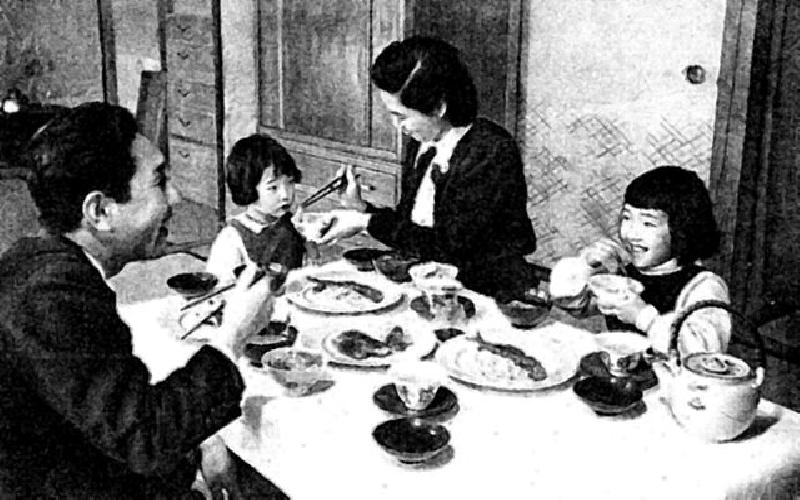"I don't interfere with my husband's business, not with my mouth, hands or legs."
These words of Kumiko Hashimoto, wife of former Japanese Premier, were quoted in Washington Post on 15 April, 1996, in an article by Mary Jordan, titled "A First Lady's Secondary Role; Premier's Wife Stands Behind her Man, Typifying Gender Roles in Modern Japan." Japan can be considered to be the first Asian country to claim a seat among the developed and industrialized nations of the world. Yet it would not be wrong to say that in terms of division of gender roles, it is more 'Asian' than
'industrialized', as also indicated by the above quote.Historical Evolution of Gender Roles in Japan
Like almost everything else, the differentiation in the gender roles, and the role of women in Japan has seen many changes during the course of history. Like all Asian societies, gender stratification has been a somewhat consistent feature in Japan too, but the historical literature suggests that the independence and equality of women was gradually undermined during the course of its history.
Early Japan followed both matrilineal and patrilineal systems, but with time and Chinese influence, the latter became the norm. During the Heian period (12 century A.D.), women were allowed to inherit, own and manage property - a right that was later taken away from them in the Tokugawa period (1603-1868 A.D.), wherein the extended family called 'IE', allowed only a male to become the house hold head and have authority and ownership of family property. In Ie', the daughters were expected to leave family on marriage. Notably, these norms were stricter in the higher socio-economic strata, while the peasant women had much more independence and enjoyed considerable equality with men within their family.
Subsequent to the Meiji restoration in 1868, the role of women in labor force intensified as Japan gradually moved towards industrialization. However, the 'Domestic Relations and Inheritance law' of 1898 and the 'Meiji Civil Code' legally subjugated women further. In early nineteenth century, women joined the workforce in even bigger numbers. It was a period when the Japanese quest for equality with their Western counterparts encouraged a change in women's role from the domestic sphere to the workplace, but the working conditions faced by them were unhealthy, the wages they earned were very low, and at a personal level, their independence within the society remained very limited.
The expectations from women in Japanese society during the modern times is best illustrated by the ideology of RYOSAI KENBO or 'good wife, wise mother', coined by a British educated Japanese scholar, Nakamura Masano, in 1875 A.D. The ideology represents the expectation that women will devote themselves to family and husband, but they should also be educated, and capable of various skills like sewing, arts etc.
Gender Roles in Modern Japan (20th Century)
In 1920s and 1930s, the rise in Japanese nationalism created the need for more young soldiers, thereby giving rise to the imperial slogan of "UMEYO! FUYASEYO!" or "give birth and multiply!". The government applauded the role of the women as the mother and encouraged them to increase the progeny. In the meantime, Japanese women had also been campaigning for more rights, and the society had begun to accept a more autonomous existence for them, although the male bastion was far from penetrated as yet.
In the post war Japan, the occupation forces imposed a new constitution in 1947, which provided for equal rights for men and women regarding ownership or inheritance of property and participating in electoral process. The women were also given the right to divorce
and retain custody of their children, rights that they have been deprived of till then. This process was carried further in 1986 by the Equal employment opportunity law. However, as the words of Kumiko Hashimoto suggest, in practice, equality is still a distant proposition.In post war era, the Japanese woman was expected to be a SENGYO SHUFU or 'professional housewife', and KYOIKU MAMA or 'education mother', who works as well as takes care of children and their education needs. Thus, in spite of participation in workplace, the Japanese women still holds the responsibility of the household. A large proportion of women leave their job after marriage, for the sake of rearing children and most of them rejoin the work-force only after their youngest child have started going to school. As a result, there is a tendency to treat them more like part-time workers - a factor that has been a big obstacle in their career development and wage-equality with their male counterparts.
Gender Roles in Contemporary Japan
In today's Japan, most males are permanent employees, while women form three fourth of the part time or irregular workforce. Less than 10% of senior managerial posts are occupied by women, unlike the United States, where the corresponding figure is 43%. In 2001, a white paper by the Government publicly expressed concern on the gender discrimination situation highlighted by an index developed by United Nations called the 'Gender empowerment measure' that showed Japan as 41st among 70 countries that participated in the survey. It highlighted that wages of women were around two third of their male counterparts. Surveys done in subsequent years have shown the situation of Japanese women to be more or less unchanged.
In 1970s, labor economist Alis Cook and her associate Hiroko Hayashi published the summary of their interviews with members of 'Keidanren', the national Federation of major Japanese companies, which clearly indicated that in spite of high participation in workforce in terms of numbers, the employers considered them a secondary, less trained and inferior workers not deserving of wages equal to their male counterparts.
In recent years, the modern Japanese women, has started expressing a far greater choice in her life-style. This has lead to frequent change of jobs and delayed marriage sometimes extended far enough to retain single-hood as a way of life. As a corollary to the falling fertility rate and shrinking population, the greater independence of women in today's Japan ironically co-exists against the backdrop of a social order that still does not seem to be ready to give them an equal independent status in spite of all the economic, legal and social developments.
References
- Mary Jordan, "A First Lady's Secondary Role; Premier's Wife stands behind her man, typifying gender roles in modern Japan", The Washington Post, 15 April 1996, Online, Lexis-Nexis Academic Universe, 11 Mar 2000.
- Suvendrini Kakuchi, "Japan: Steps in gender equality come too slowly for women", SUNS4930, available at url:http://www.twnside.org.sg/title/slowly.htm [21.4.08]
- Alice H. Cook and Hiroko Hayashi, Working women in Japan: discrimination, resistance, and reform. Ithaca: New York State School of Industrial and Labor Relations, 1980 , page 28.










